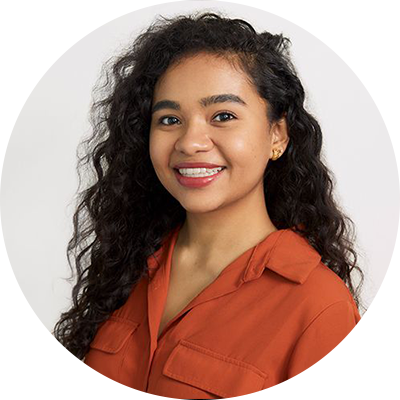Don't Miss
- Make your money work for you with a high-interest savings account
- Need to wrangle in your spending? Consider a budgeting app
- Protect yourself from expensive debt: Learn how to create an emergency fund
Unexpected vet bills don’t have to break the bank
Spot Pet Insurance offers coverage for treatment of accidents, illnesses, prescriptions drugs, emergency care and more.
Plus, their preventative care plan covers things like routine check-ups, microchip implantation, and vaccinations, if you want to give your pet the all-star treatment while you protect your bank account.
Get A QuoteHow to use the debt snowball method to pay down $50,000 in debt in 1 year
The debt snowball method starts with paying off the smallest debt or accounts with the lowest balances first, making only the minimum payments on all of the other outstanding debts. Once you’ve paid off one small debt, you move on to the next smallest debt, and so on.
You metaphorically “snowball” your debts by tackling the smallest balance first before moving on to bigger ones, chipping away at your outstanding debt.
How does it work?
The debt snowball method involves prioritizing paying off loans with the lowest interest rates first.
For example, if you have $18,000 in student loans at 6.2% interest, a credit card bill at $12,000 with 22% annual percent rate (APR), and a personal loan of $20,000 with an interest rate of 7.2% — for a total of $50,000 in debt — you would pay off the student loan first, making only the minimum payments on the others. After the student loan is paid off, you would then move on to the other outstanding debts — slowly, but surely, winning the snowball fight.
Why the debt snowball method works to pay off debt in a shorter time-frame
As you knock out each debt, the money you free up snowballs, allowing you to attack larger balances with more money, more force. In this way, it's like a snowball rolling down a hill — while it may start small and slow, over time it builds in size and momentum until it reaches the final goal.
Who should use the debt snowball method when tackling $50,000 of debt?
This method can be especially motivating if you’re someone who needs quick wins to stay encouraged. Eliminating smaller debts early gives you a sense of accomplishment, boosting your confidence. You might see your first debt disappear in just a few months, providing a psychological win as you work toward clearing your $50,000 debt.
However, while the debt snowball method can be great for motivation, you might still accumulate significant interest charges on larger debts. It’s an effective strategy for those who benefit from seeing steady progress and small victories along the way.
How to use the debt avalanche method to pay down $50,000 in debt in 1 year
The debt avalanche method involves aggressively paying off your highest interest debt — while making the minimum monthly payments on the others — before moving on to the next highest.
This method helps you pay off your debts faster and at a lower cost, because you reduce your largest interest charges and associated fees.
Let's say you have a $12,000 credit card balance at 22% APR, $18,000 in student loan debt at 6.2% interest, and a $20,000 personal loan with an interest rate of 7.2%. Using the debt avalanche method, start by paying off the credit card debt and pay only the minimum on the other outstanding loans. Once your credit card is paid off, tackle the personal loan debt, followed by the student loan.
By taking this approach, you end up tackling the debt that costs the most in interest and can, eventually, use those savings to pay off other debts. In the long run you end up debt-free while saving a substantial amount on interest in the long run.
Why the debt avalanche works to pay off debt in a shorter time frame
The debt avalanche method takes a different approach, compared to the debt snowball. Rather than focusing on the smallest balances, you start by paying off the debt with the highest interest rate first. This method can help you pay off your debt faster and at a lower overall cost, as it prioritizes reducing the interest you pay over time.
Who should use the debt avalanche method when tackling $50,000 of debt?
While the debt avalanche can save you more money in the long run, it requires discipline and patience, as you may not see immediate results. If your highest-interest debt also has a large balance, it could take longer to make noticeable progress. That said, if you stick with it, this method is highly effective in reducing the total interest paid and accelerating your journey to being debt-free.
If you’re trying to pay off $50,000 in one year, the debt avalanche method may be the most cost-effective way, especially if your debt comes with high interest rates. Just make sure to keep an emergency fund on hand to cover unexpected expenses without derailing your progress.
Canada’s top credit cards—find your perfect match!
Maximize rewards, save on interest, or earn cash back. Compare the best credit cards in Canada and pick the one that works for you!
Find Your Card NowBottom line
Choosing between the debt snowball and debt avalanche methods comes down to your personal preferences and financial situation. If you’re someone who needs motivation and enjoys seeing smaller balances disappear, the debt snowball method might work best. However, if saving on interest is your primary goal and you’re comfortable with taking on bigger balances first, the debt avalanche method may be your best option.
Both methods can help you achieve your goal of paying off $50,000 in one year, but success ultimately depends on sticking to the plan. Do the math, but also consider what will keep you motivated. Whichever path you choose, the ultimate goal is financial freedom — so stay committed and keep your eyes on that prize!
— with files from Doug Whiteman and Sarah Cunnane
What To Read Next
- Tired of living paycheque to paycheque? Learn how to get out of debt
- Shelter your earnings using a Tax-Free Savings Account
- Find the best credit card in Canada to help you save money and earn rewards
Smart investing starts here
Get 100 free online equity trades with promo code EDGE100 when you open a CIBC Investor’s Edge account by Sept. 30, 2025. Click here to unlock 100 free trades and take control of your investments. Get started today.









